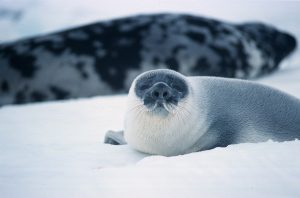Physiological adaptations
Physiology is how organs and tissues of the body are structured and working. By evolution, the physiology of all living organisms is designed to keep them healthy and thriving in order to survive and reproduce.
The physiology of any species is specifically adapted to the environment in which the species normally live. Arctic mammals, for example, have a range of adaptations that let them stay year-round in the same habitat instead of migrating to warmer areas in winter. These include thick layers of isolating fat, special lung alveolus allowing them to stay for a long time both below and above water, and delayed implantation. In contrast migrating birds have adaptations to ease long-distance movement, such as hollow bone structure keeping body mass low, long pointed wings, and even doping (yes, like some sport athletes do)!

The thick layers of below-skin fat is one of many physiological adaptations that make seals able to live year-round in an Arctic environment. Photo: Jo Jorem Aarseth, NIBIO


 This project (EDU-ARCTIC) has received funding from the European Union’s Horizon 2020 research and innovation programme under grant agreement No 710240. The content of the website is the sole responsibility of the Consortium and it does not represent the opinion of the European Commission, and the Commission is not responsible for any use that might be made of information contained.
This project (EDU-ARCTIC) has received funding from the European Union’s Horizon 2020 research and innovation programme under grant agreement No 710240. The content of the website is the sole responsibility of the Consortium and it does not represent the opinion of the European Commission, and the Commission is not responsible for any use that might be made of information contained.